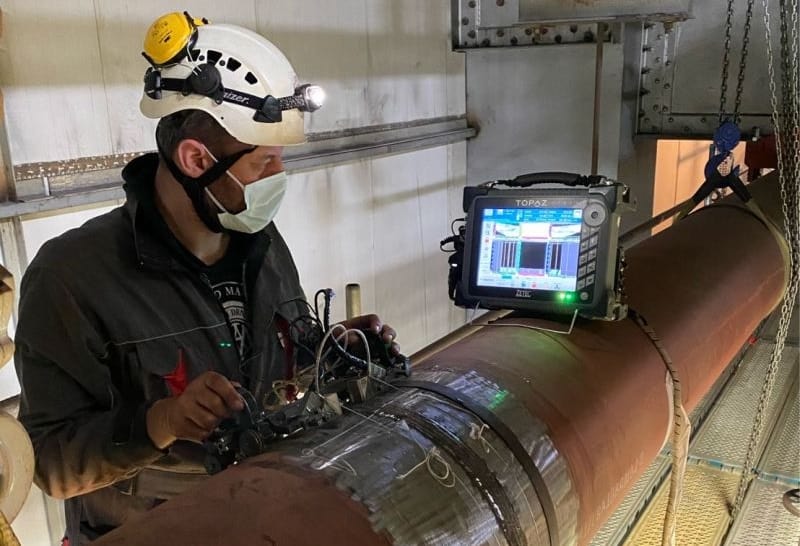Make Best Use Of Efficiency: Proactive Pipeline Welding Inspection Strategies
Wiki Article
Comprehensive Summary of Pipeline Welding Examination Treatments
Pipe welding assessment procedures play a critical duty in assuring that welded links satisfy strict market requirements and specifications. From thorough pre-welding examinations to detailed post-weld assessments, a well-defined evaluation process is important for preserving the architectural sturdiness of pipes.Pre-welding Inspection Preparations
Prior to beginning the welding procedure, thorough pre-welding examination preparations are important to make certain the stability and high quality of the weld joint. These preparations include a precise examination of the products to be welded, the welding equipment, and the work setting. By carrying out extensive pre-welding inspection preparations, potential concerns can be determined and solved early on, leading to top notch and reputable weld joints.Welding Procedure Credentials
Extensive pre-welding inspection prep work lay the foundation for the critical process of Welding Procedure Certification, guaranteeing the honesty and high quality of the weld joint. Welding Procedure Credentials (WPQ) is an important action in the welding process that entails screening and licensing welding procedures to assure they meet certain requirements and requirements. The WPQ process typically includes welding treatment requirements growth, welding treatment certification screening, and documents of the results.During welding treatment specification development, crucial details such as the welding process, welding materials, joint layout, and welding specifications are specified to develop a comprehensive procedure. Subsequently, welding procedure credentials testing is conducted to validate the recommended procedure's stability. This screening often includes welding examination discount coupons that go through different mechanical and non-destructive examinations to analyze the weld's quality and adherence to the defined standards.
In-process Weld Inspection
During the welding process, in-process weld evaluation plays a crucial duty in guaranteeing the high quality and stability of the weld joint - Pipeline Welding Inspection. This kind of examination entails checking the welding parameters, evaluating the weld bead formation, and spotting any type of possible flaws or discontinuities as they happen. By performing in-process weld evaluations, welding operators can quickly deal with any issues that may occur, consequently guaranteeing and protecting against further issues that the last weld satisfies the required specificationsCommon approaches utilized for in-process weld examination include visual evaluation, fluid penetrant testing, magnetic bit screening, ultrasonic testing, and radiographic screening. Generally, in-process weld examination is vital for keeping the quality and dependability of welded pipelines.
Non-destructive Screening (NDT)
Non-destructive Screening (NDT) is an important approach employed in pipe welding inspection to examine the honesty of weld joints without creating damage to the welded framework. By using various NDT techniques, assessors can examine the top quality of welds and identify any type of issues or gaps that might endanger the architectural stability of the pipe. Usual NDT approaches used in pipeline welding evaluation consist of Radiographic Screening (RT), address Ultrasonic Screening (UT), Magnetic Fragment Testing (MPT), Liquid Penetrant Testing (LPT), and Visual Testing (VT)RT involves using X-rays or gamma rays to produce images of the internal structure of the weld, permitting assessors to spot problems such as porosity, cracks, or incomplete fusion. UT makes use of high-frequency acoustic waves to spot problems under the surface area of the weld, using thorough information concerning the dimension and area of issues. MPT and LPT are utilized to identify surface-breaking defects by using penetrant liquids or magnetic particles to the weld area. Furthermore, VT includes visual evaluation of welds to identify any kind of noticeable blemishes.
Post-weld Evaluation and Documents


Paperwork of post-weld inspection searchings for is crucial for keeping quality assurance documents and making sure compliance with industry requirements and guidelines. In-depth reports need to consist of information concerning the inspection techniques utilized, the area and nature my website of any issues found, and any corrective actions taken - Pipeline Welding Inspection. Correct documents not only works as a document of the weld's top quality but additionally help in future maintenance and examination processes
Conclusion

In final thought, pipeline welding inspection treatments play a crucial function in making sure the high quality and honesty of welds. From pre-welding inspections to post-weld documentation, each step is crucial in keeping the safety and security and effectiveness of pipes. By adhering to well-known treatments and carrying out comprehensive inspections, prospective defects can be determined and addressed prior to they cause expensive repair services or failings. On the whole, adherence to proper examination procedures is crucial to the success of pipe welding tasks.
From meticulous pre-welding evaluations to comprehensive post-weld assessments, a distinct examination process is go to this site necessary for maintaining the architectural sturdiness of pipelines. By conducting in-process weld inspections, welding operators can immediately deal with any kind of issues that may develop, consequently avoiding more flaws and making certain that the last weld fulfills the called for specs.
Usual techniques made use of for in-process weld examination consist of visual examination, liquid penetrant testing, magnetic particle testing, ultrasonic testing, and radiographic screening.Non-destructive Testing (NDT) is an important method used in pipe welding examination to examine the integrity of weld joints without creating damage to the bonded structure. Post-weld examination involves different techniques to evaluate the welds for problems, consisting of visual examination, dye penetrant screening, magnetic bit screening, ultrasonic screening, and radiographic testing.
Report this wiki page